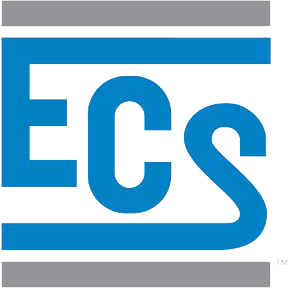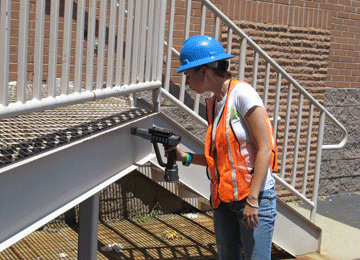Lead is highly toxic and affects virtually every system of the human body. Children are especially vulnerable to lead poisoning. The most common route of lead exposure is ingesting dust from lead-based paint deterioration. When it comes to exposure to this toxin, building renovations and demolitions are two of the common culprits.
What is Lead-Based Paint?
Lead-based paint is generally defined as any paint, varnish, shellac, or other coating that contains lead equal to or greater than 1.0 milligram per square centimeter as measured by X-Ray Fluorescence (XRF), or 0.5 percent by weight.
Renovation, Repair, and Painting (RRP) Rule Requirements
Since 2010, contractors performing renovations, repairs, or painting that disturb painted surfaces in or on residences or “child-occupied facilities” as defined by the EPA (daycare centers, elementary schools, hospitals, etc.) are subject to the Renovation, Repair and Painting (RRP) rule if the structure was built before 1978. Activities that disturb six-square-feet or more of interior surface, 20-square-feet of exterior surface, or any window replacements are subject to the RRP rule.
Contractors are required to provide property owners and building occupants with the EPA pamphlet “Renovate Right: Important Lead Hazard Information for Families, Child Care Providers, and Schools” prior to the start of any project subject to the RRP. Proof of pamphlet distribution must also be documented.
Contractors must assume that paint disturbing activities will involve LBP when working on structures built before 1978. They must test the paint using an EPA-approved chemical spot-test kit or other approved method to determine if LBP is present. Alternatively, EPA-accredited, state-licensed Lead-Based Paint Inspectors can perform lead-based paint assessments using a hand-held XRF analyzer, which provides instant results without causing damage to the painted surface.
RRP Rules for Containing Dust Creation
During activities subject to the RRP rule, contractors must encapsulate work areas using polyethylene sheeting, follow approved work practices that control dust creation, and thoroughly clean work areas once activities are complete. Contractors are required to evaluate the presence of lead dust by comparing dust wipes to an EPA reference card showing “clean” versus dust-laden wipes. However, visually evaluating the presence of lead dust is subjective, and does not provide documentation of lead dust findings. Alternatively, a Lead-Based Paint Inspector can collect lead dust wipes for laboratory analysis. Providing laboratory documentation completed by a licensed Lead-Based Paint Inspector provides documentation of compliance with the RRP rule.
How to Become a Certified Renovation Firm
To be a Certified Renovation Firm, contractors must be approved by the EPA. This requires that at least one employee has received training from an EPA-accredited training provider for Lead Safe Work Practices. Contractors must assign a Certified Renovator to each project subject to the RRP. The Certified Renovator is responsible for documenting lead safe work practices throughout the project.
Other RRP Considerations
Landlords, public and private school maintenance personnel, and residential property managers are also required to comply with the RRP and be EPA-certified if they perform paint disturbing maintenance. Under the RRP, these groups are treated the same as contractors. Property owners and managers should require contractors to provide written documentation of their status as an EPA Certified Renovation Firm prior to starting any work that will be subject to the RRP rule. State and local regulating agencies often have additional LBP regulations that differ from, or go beyond, the EPA requirements, which must also be taken into consideration.
Finally, the RRP rule only applies to individuals or companies who are compensated for work that disturbs LBP. The RRP rule does not apply to homeowners or uncompensated individuals; however, homeowners should consult the “Renovate Right” EPA pamphlet and the EPA website.
Contact ECS for RRP Training and Certification
Should you or the employees of your company require RRP certification, ECS is an approved RRP training firm. In addition, ECS employs licensed LBP Inspectors/Risk Assessors to assist with field testing, documentation of findings, and RRP compliance. Additional information on lead hazards and complete information on the RRP rule can be found at: http://www.epa.gov/lead/.

